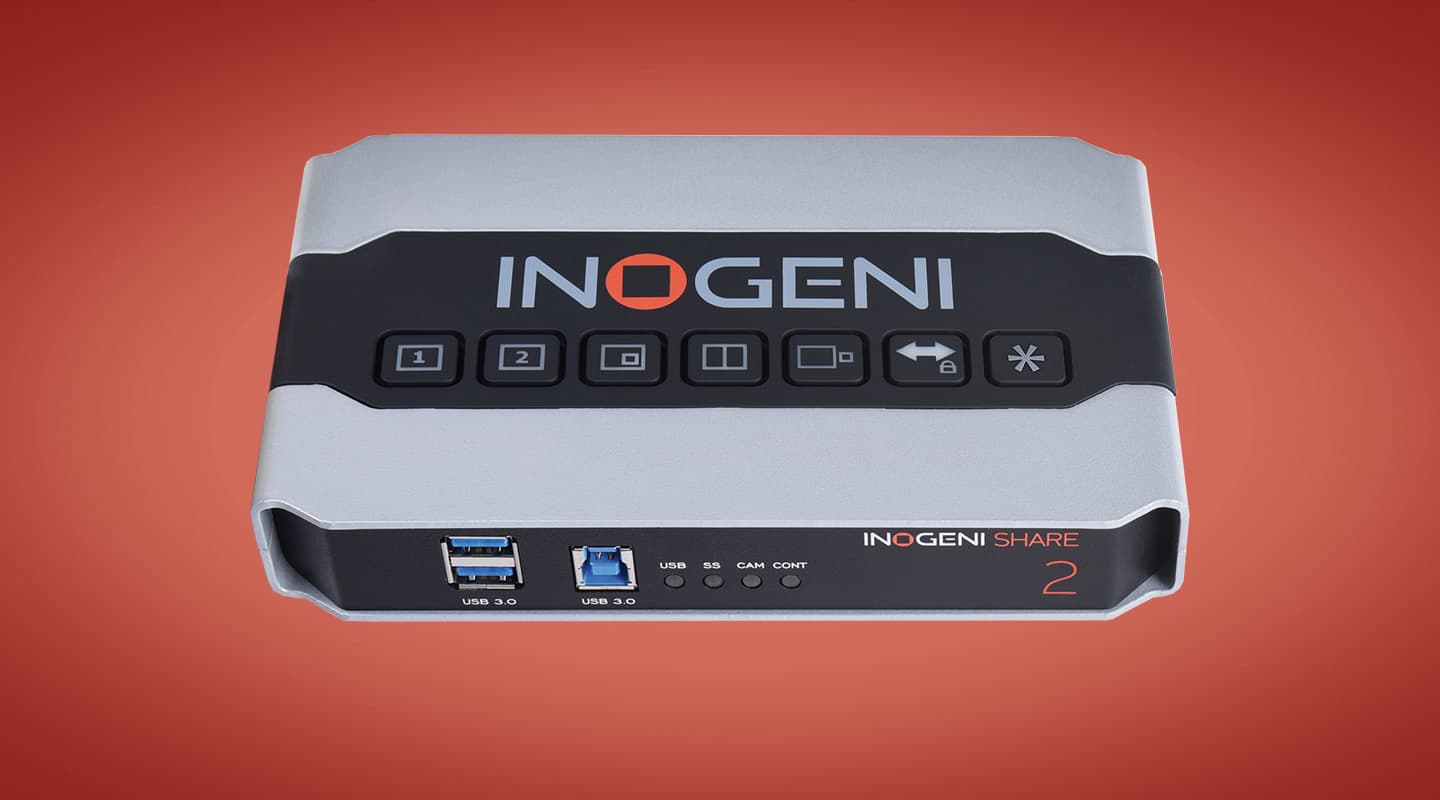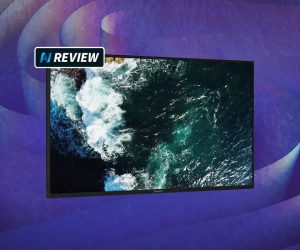
Review: Inogeni Share2
Dual Video to USB 3.0 Super Converter.
Review:/ Andrew Bennett
The internet is a magical world. It allows us to communicate across the hallway, the street, country, and the world at literally the click of a button. Technology such as Skype for Business, Google Hangouts, or any of the other web-based video communication tools allows individuals, teams and businesses to connect.
What was recently only available in the realm of big business — with big AV budgets and dedicated ISDN lines — is now available (in a form) to anyone with a laptop computer and a semi-respectable internet connection. However, there’s a catch: a laptop and webcam will only get you so far. When the need for an additional video source arises, the technical landscape gets complex and potentially pricey.
The response to the problem of additional video sources is to a) make do; or b) take a big step up and invest in some sophisticated gear that’ll do the job admirably (but requires some light bedtime reading of the manual, along with an hour or more of setup). Luckily, now there is option c).
It is as if the Inogeni product development team put the following headline on its whiteboard: ‘What features are required for 95% of the people trying to do multiple source web conferencing?’. The result is the Share2 ‘Dual Video to USB3.0 Super Converter’.
THE PACKAGE
On paper, Share2 is a black box consisting of a two-input video mixer, combined with a scaler and, to top it off, a video-to-USB3 converter, packaged in one small, easy-to-use unit.
Pick up the Share2 and its weight is immediately reassuring — it is a rugged little critter, with an outer shell of steel that is softened by a strip of seven large pushbuttons along the top. The buttons look like they belong on a piece of factory machinery — big, solid, unambiguous. The second thing to notice, or notice the lack of, is that there isn’t a driver disc. This is truly a ‘plug ’n’ play’ device. Inogeni has shielded us from configuration complexity — all you need is a machine running Windows 7 or higher, or a Mac running Mac OSX 10.10 or higher, a spare USB3 port, paired with your favourite software of choice and away you go.
The ‘main’ video channel has a single HDMI input, labelled as ‘Camera In’, while the secondary input is a DVI-I connector supporting both digital and analogue signals. There is also an RCA connector for a composite signal should you require it. In the box Inogeni throws in a ‘VGA to DVI’ and ‘HDMI to DVI’ adaptors. Audio is handled either via the HDMI port, or there are 2 x 3.5mm jacks supporting audio in and out. There is a RJ45 port for RS232 communications, should you need to wire the Share2 into an automation control system. Around the front there is the USB3 B connector for connection to the host computer, as well as a two-port USB3 hub, useful for other USB based equipment, such as a conference microphone.
MORE INFO

BIG BUTTONS
Switching between video sources during use couldn’t be simpler — press one of the large rubber buttons. There are options for either sources, a side-by-side view of both sources, either the same size or one larger than the other, and finally a picture-in-picture effect with one source floating over the other in any of the four corners of the screen. During my test, the switching was seamless and near instant.
DELAY & LAG
Lag is the bane of real-time video conferencing. Lag breaks down the sense of real-time communication and thus the process feels unnatural, and users tend to quickly lose patience, often avoiding the system altogether.
During my tests, there was a lag visible to the naked eye when closely studied. The audio just sat in front of the video feed by a few milliseconds. Despite this, it wasn’t long enough to feel distracting in general conversation. It is important to note that the milliseconds of lag I experienced could be down to any number of factors, from the choice of camera, to the web-based software delivery system.
MORE CONTROL
The large buttons act as the primary interface but under the bonnet there are a couple of other features worthy of note. Inogeni has released the ‘Inogeni Software Suite’ as a collection of tools that assist in firmware upgrades, recording of videos streams and, of course, controlling the Share2. There is built-in Bluetooth 4 support along with an accompanying iOS app. (One thing to note, there doesn’t appear to be a way to lock down this feature, meaning anyone with the app could ‘accidentally’ take control. Luckily the star button on the unit itself forces a disconnect.) As previously mentioned, the unit supports control over RS232, alongside control over IP with the optional IP-to-serial adaptor.
The Inogeni Share2 fills an interesting hole in the market. Is allows those doing smaller scale web-based video conferencing to have access to technology that previous has been too complex (and possibly too expensive) to be worth considering for the ROI. Now they can easily add a second camera to their setup. But the Share2 also takes into account those with larger or more permanent installations in boardrooms, conference rooms and classrooms with the added support for remote control and its array of input source options.
The Share2’s ability to handle practically any standard signal thrown at it and for it to perform the hardware scaling and technical admin that end users mostly don’t care for is a real plus. AV storerooms are full of ‘nifty’ boxes’ that our clients simply lost faith in because they were just ‘too hard’ despite their redeeming features. Share2 won’t be one of those boxes. It’s easy and effective. I had Share2 working on a Skype call within five minutes of taking it out of the box. Some may find it frustrating, that they can’t get in a tweak the size of the picture in picture or the exact placement. But this really is an end users’ appliance, and I’ve not doubt they’ll appreciate how simple and easy it is to use to get the job done.
NO DRIVERS, NO WORRIES
Yes, I was sceptical at first too: how does a vision mixer that works over USB3 pull off this no-drivers magic trick? Here’s how: the Share2 performs the vision switching in hardware and just sends a single output over USB3 to the computer. The computer recognises the Share2 as a single USB3 webcam and uses the appropriate default drivers within the OS. Setting up your software of choice is as simple as switching the webcam the OS is using. For desktops without a webcam, the Share2 becomes the only (and therefore, default) device. Laptop users may need to switch from their built-in camera to the Share2. During testing, with a few off-the-shelf consumer-level pieces of software, the Share2 easily stood up to handling continuous hours of work without interruptions or dropouts.
This means the Share2 can sit alongside a setup in any conference room or boardroom, and the training for users is reduced to a simple two-minute conversation.















RESPONSES